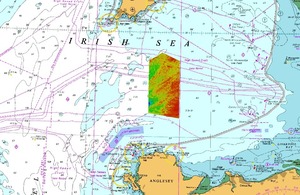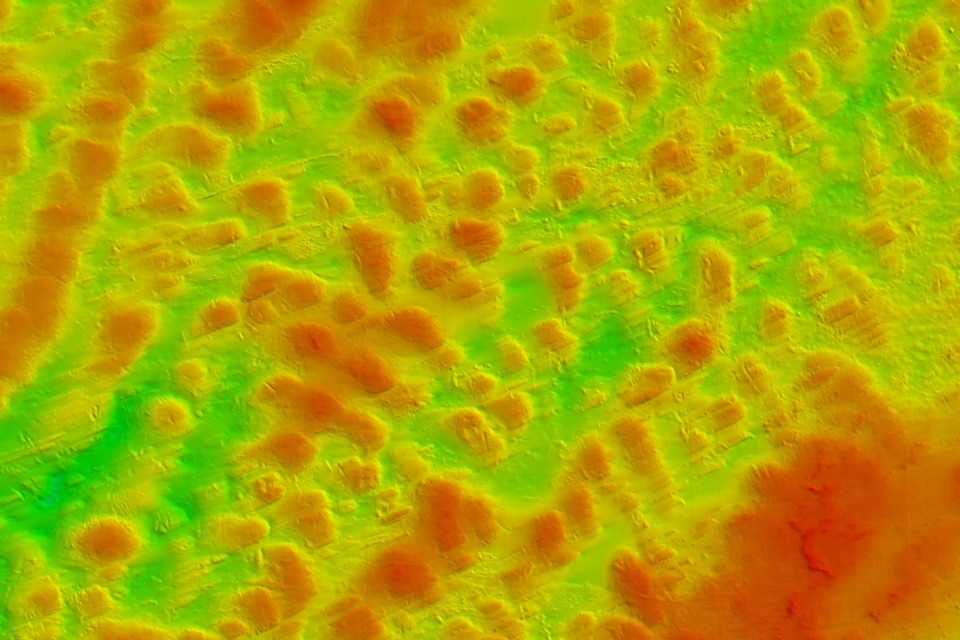Hydrographic survey data uncovers preserved glacial landscape
The waters between Ireland and the UK were once covered by a huge ice sheet comparable in size to the glaciers found today in Antarctica

Location of HI1706 overlaid on Chart 1121: Irish Sea with Saint George’s Channel and North Channel. Image credit: The MCA and the UKHO (2022).
The UK Hydrographic Office (UKHO) has supported a greater understanding of the Irish Sea’s geological history, after analysing seabed mapping data collected under the Civil Hydrography Programme (CHP) to support safe navigation in waters between Ireland and North Wales.
Global cooling during the last glaciation, around 27,000 years ago, led to the formation of a vast ice sheet measuring 840,000km2, which contained enough ice to raise global sea levels by 1.8 metres. The British-Irish Ice Sheet stretched from the Isles of Scilly to the Shetland Islands.
Analysis of the hydrographic data by the Scientific Analysis Group at the UKHO also revealed a series of remarkable well-preserved glacial landforms. These landforms on the seabed show thick, fast glacial ice – comparable in size to the glaciers found today in Antarctica – that once flowed through the centre of the Irish Sea basin more than 20,000 years ago.

Extensive drumlin field in the centre of the Irish Sea. Large erratic boulders and eroded bedrock ridges are also visible in the data. The former direction of ice flow was from northeast to southwest. Image credit: UKHO (2022).
The ice sheet inundated Great Britain and Ireland with glacial ice several kilometres thick and was characterised by dendritic, or tree-like, ice flow,” said Laurence Dyke, Geospatial Information Specialist – Scientific Analysis Group, at the UKHO.
A number of very large glaciers, known as ice streams, drained ice from the mountainous areas down to the ocean, calving icebergs into the Atlantic. These huge marine-terminating outlet glaciers flowed at speeds of several kilometres a year, analogous to the largest glaciers in present-day Greenland and Antarctica.
Insight into the Irish Sea’s glacial past was discovered during analysis of information gathered through a long-running data-collection initiative operated via the CHP and administered by the Maritime and Coastguard Agency (MCA) in partnership with the UKHO.
Under the CHP, experts at the UKHO provide technical oversight and data validation, which is used to update the nation’s nautical charts and publications to ensure they remain current, safe and fit for purpose. The data from the Irish Sea was collected as part of the Hydrographic Instruction 1706.
Part of a hydrographer’s work for the CHP involves routine re-surveys in areas where the seabed itself is highly mobile, along with more specialist work such as carrying out high-resolution wreck investigations, water column data collection and seabed grab sampling.
Once the data has been gathered, the UKHO reviews the latest charts, updating them where necessary, and assesses whether the survey frequency should be revised. Any chart updates are distributed across the UK government to uphold the “collect once, use many times” approach to gathering and sharing information.
All hydrographic information such as data density, interline consistency, geodetic parameters and tidal observations goes through the UKHO’s rigorous quality assurance process. After the data is validated, it is then archived in the UKHO’s bathymetric database, ready for inclusion on nautical charting products.
For more information read the UKHO blog: Hydrographic Survey uncovers fascinating insight into the geological past of the UK.